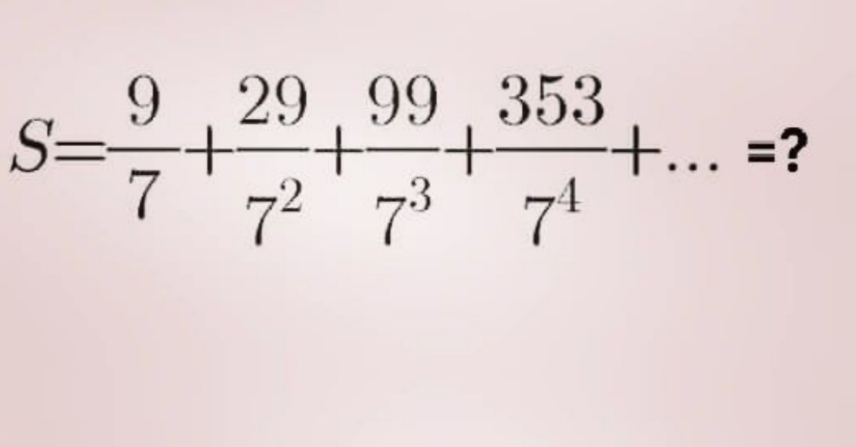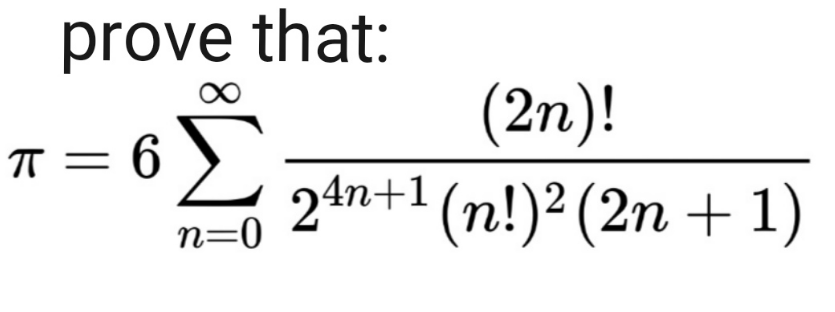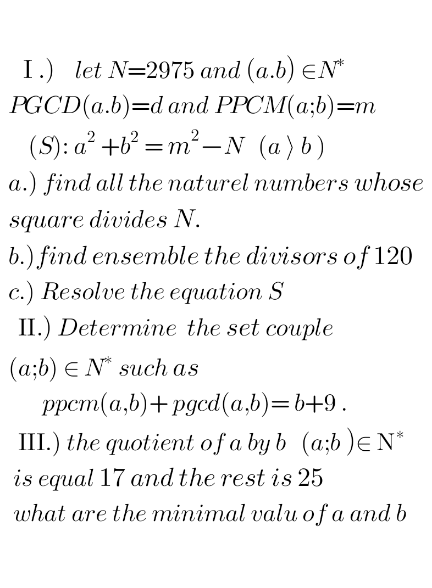
Number TheoryQuestion and Answers: Page 6
Question Number 166994 Answers: 2 Comments: 0
Question Number 166911 Answers: 1 Comments: 0

Question Number 166910 Answers: 1 Comments: 1
$${given}\:{that}\:{is}\:{prime},{proof}\:{that}\:\sqrt{{p}}\:{is}\: \\ $$$${irrational} \\ $$
Question Number 166881 Answers: 0 Comments: 0

Question Number 166602 Answers: 0 Comments: 0
Question Number 166601 Answers: 0 Comments: 0
Question Number 166530 Answers: 1 Comments: 0

Question Number 166475 Answers: 2 Comments: 5
Question Number 164940 Answers: 0 Comments: 1
Question Number 164279 Answers: 3 Comments: 0
Question Number 163763 Answers: 3 Comments: 1
Question Number 163662 Answers: 1 Comments: 1

Question Number 163397 Answers: 0 Comments: 5

Question Number 163300 Answers: 1 Comments: 0
Question Number 163168 Answers: 2 Comments: 1

Question Number 162674 Answers: 2 Comments: 0

Question Number 162169 Answers: 2 Comments: 0
Question Number 161860 Answers: 1 Comments: 0
Question Number 161843 Answers: 0 Comments: 3
Question Number 161622 Answers: 1 Comments: 0
Question Number 161528 Answers: 1 Comments: 0
Question Number 160270 Answers: 2 Comments: 0

Question Number 160061 Answers: 1 Comments: 0
Question Number 159925 Answers: 1 Comments: 0
Question Number 159775 Answers: 1 Comments: 0
Question Number 159461 Answers: 0 Comments: 4
